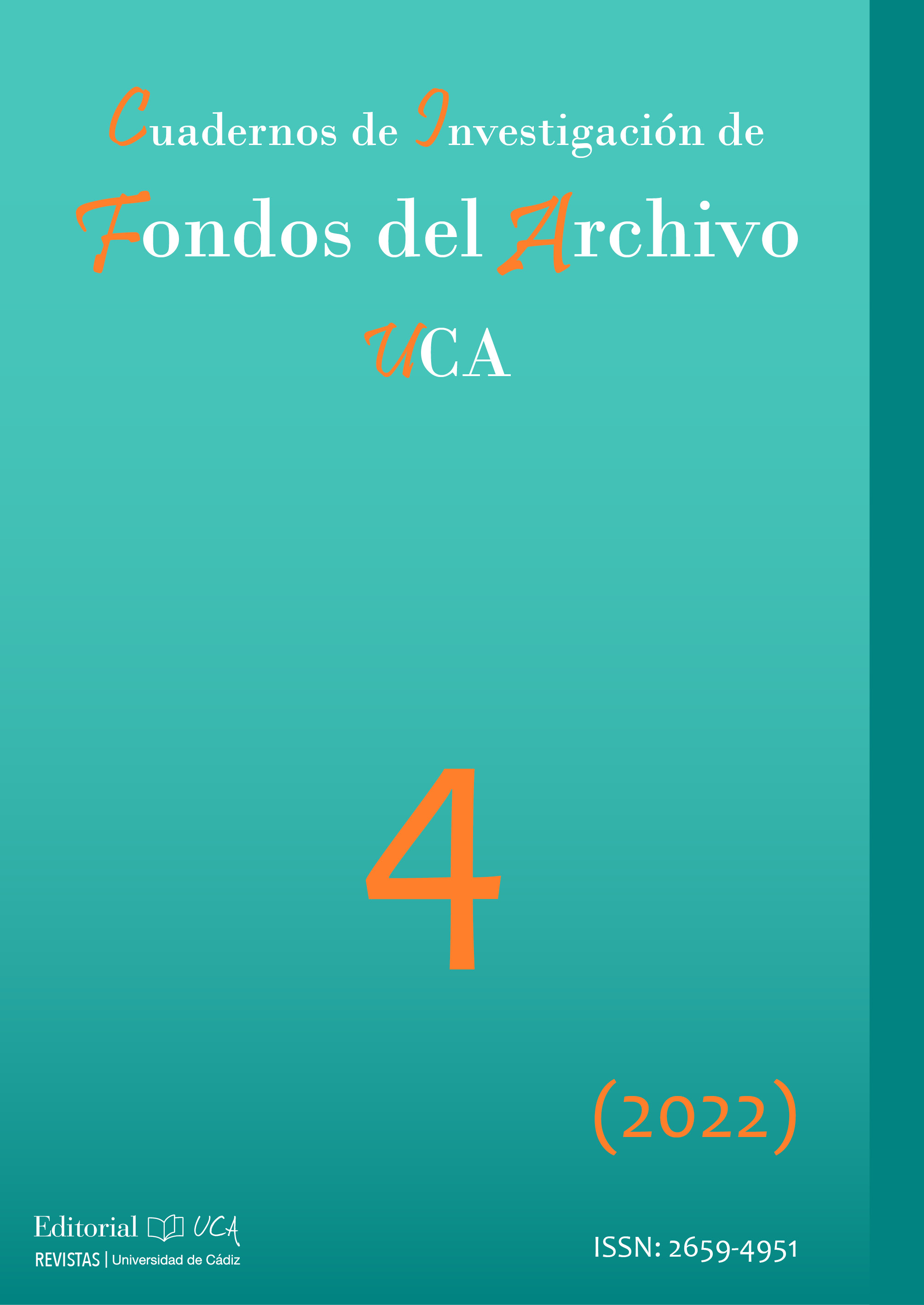The Matía Menchacatorre house and the Clavería Bridge: innovation in the physical and financial infrastructure in the 19th century

DOI
https://doi.org/10.25267/Cuad_investig_fondos_arch_UCA.2022.i4.06Info
Abstract
The Matía Menchacatorre commercial house was a forerunner in the creation and promotion of physical infrastructure in Manila, as well as financial innovation related to its development and protection in the 19th Spanish transpacific empire. The construction of the Clavería Bridge, Asia’s first suspension bridge, presented new challenges for the design of financing, insurance, and investment recovery schemes. Thanks in great part to José Matía’s letter copiers in the University of Cádiz Archive, this paper reconstructs the history of this shipping enterprise and the fascinating business panorama in Manila.
Keywords
Downloads
How to Cite
License
Se publica bajo licencia CREATIVE COMMONS, respetando los derechos de autor.References
BAUCOM, I. (2007) Specters of the Atlantic: Finance Capital, Slavery, and the Philosophy of History. Duke University Press.
BERNABÉU, A. S. y MARTÍNEZ SHAW, C. (2013). Un océano de seda y plata: el universo económico del Galeón de Manila. Editorial CSIC.
CÁRCAMO MARTÍNEZ, J. (2015). Jules Seguin en España: prefabricación e innovación de los puentes colgantes de Fuentidueña, Arganda, Carandia y Zaragoza construidos por el empresario francés. Actas del Noveno Congreso Nacional y Primer Congreso Internacional Hispanoamericano de la Historia de la Construcción. Instituto de Juan de Herrera, Escuela Técnica Superior de Arquitectura de Madrid.
CARIÑO Y ANCHETA, J. M.ª (2002). José Honorato Lozano: Filipinas 1847. Ars Mundi Philippinae.
CARIÑO Y ANCHETA, J. M.ª y PINTO NER, S. (2004). Islas Filipinas, 1663-1888: álbum. Ars Mundi Philippinae.
CÓZAR NAVARRO, M.ª C. (1998). Ignacio Fernández de Castro y Cía: una empresa naviera gaditana. Servicio de Publicaciones de la Universidad de Cádiz.
CÓZAR NAVARRO, M.ª C. (2020). La Orca del Atlántico: Pedro Martínez y su clan en la trata de esclavos (1817-1867). Sílex.
GÁRATE OJANGUREN, M.ª M. (2006). Cambios cualitativos y cuantitativos en el comercio internacional del azúcar cubano (XVIII-XIX). En F. Morales Padrón (coord.), XVI Coloquio de historia Canario-Americana. (pp. 1536-1558). Editorial Cabildo Insular de Gran Canaria.
GÁRATE OJANGUREN, M.ª M. (s.f.) Fernando Aguirre. En Real Academia de la Historia, Diccionario Biográfico electrónico. https://dbe.rah.es/biografias/31270/fernando-de-aguirre-gaztelu
HAU, C. S. (2017). Elites and Ilustrados in Philippine Culture. Quezon City, Ateneo de Manila University Press.
IBAÑÉZ, P. (2011) El puente de San Pedro. Una aproximación a su historia constructiva. En S. Huerta Fernández (coord.), Actas del Séptimo Congreso Nacional de Historia de la construcción: Santiago de Compostela, 26-29 de octubre de 2011. Instituto Juan de Herrera.
KAGAN, R. (2000). Cartografía y comunidad del Mundo Hispánico. Revista Pedralbes, (20), 11-36
LEGARDA, B. J. (2002). After the Galleons: Foreign Trade, Economic Change & Entrepreneurship in the Nineteenth-Century Philippines. Ateneo de Manila University Press.
LUENGO GUTIÉRREZ, P. (2013). Manila, plaza fuerte (1762-1788): ingenieros militares entre Asia, América y Europa. Ministerio de Defensa, Subdirección General de Publicaciones y Patrimonio Cultural.
MERINO, L. (1987). Arquitectura y urbanismo en el siglo XIX: introducción general y monografías. Centro Cultural de España en Manila.
PERMANYER UGARTEMENDIA, A. (2014). La participación española en la economía del opio en Asia Oriental tras el fin del Galeón. Universitat Pompeu Fabra.
QUIRINO, C., PARCO DE CASTRO, M.ª E. G. y GONZÁLEZ, A M. R. (2016). Carlos L. Quirino’s Old Manila. Vidal Foundation.
RICHARDSON, K. y LATTMAN, P. (2007, 1 de febrero). Financiers Now Say ‘Trust Us’. Like the Blank-Check Offerings of Yore, SPAC Investors Are Asked to Buy In -- on Faith. Wall Street Journal.
SCHEIN, R. H. (1997). The Place of Landscape: a Conceptual Framework for Interpreting an American Scene. Annals of the Association of American Geographers, 87(4), 660-680.
VV. AA. (2010). Pallas. Revue d’Etudes Antiques, (82). [Número dedicado a Ab aquitania in Hispaniam. Mélanges d’archéologie et d’histoire offerts à Pierre Sillières]. https://doi.org/10.4000/pallas.11289
WISE, E. (2019). Manila, City of Islands. Ateneo de Manila University Press.






